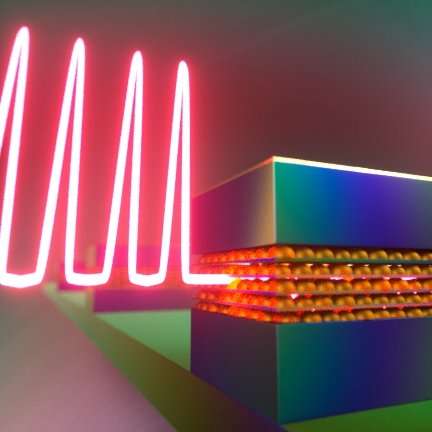Quantum dots for data bottlenecks?

Hybrid silicon/quantum dot lasers could save up to 75 percent of the energy consumed by InP based photonic chips, say UCSB researchers
Thousands of miles of fibre-optic cables crisscross the globe transmitting ever-increasing amounts of data. But when signals arrive at a data centre en route to their final destination they encounter a silicon bottleneck: slower electron based signal pathways instead of photonic "˜superhighways'.
To break through this bottleneck, researchers from the University of California, Santa Barbara are working to integrate photonics into silicon devices, creating new photonic integrated circuits (PICs) and hybrid lasers based upon quantum dots.
Such lasers could save as much as 20 to 75 percent of the energy consumed by existing InP based solutions, according to Justin Norman, a graduate student at UC Santa Barbara. "It's a substantial cut to global energy consumption just by having a way to integrate lasers and photonic circuits with silicon," he noted.
Since silicon does not have ideal properties for constructing lasers, researchers turned to III-V materials and a hybrid integration approach.
Initially, the researchers struggled to find a functional integration method, but ultimately settled on quantum dots because they can be grown directly on silicon, Norman said. The quantum dots, only a few nanometers wide, are small enough that they behave like individual atoms. When driven with electrical current, electrons and positively charged holes become confined in the dots and recombine to emit light"”a property that can be exploited to make lasers.
The researchers made their III-V quantum-dot lasers using molecular beam epitaxy (MBE). They deposit the III-V material onto a silicon substrate, and its atoms self-assemble into a crystalline structure. But the crystal structure of silicon differs from that of III-V materials, leading to defects that allow electrons and holes to escape, degrading performance. Fortunately they found that by packing quantum dots together at high densities, more than 50 billion dots per square centimeter, they capture electrons and holes before all particles are lost.
Quantum-dot lasers have many other advantages, Norman said. For example, quantum dots are more stable in photonic circuits because they have localized energy states that behave in a similar fashion to those of individual atoms. They can also function on less power because they don't need as much electric current. Moreover, they can operate at higher temperatures and be scaled down to smaller sizes.
In just the last year, the researchers said they made considerable progress thanks to advances in crystal growth techniques, Norman explained. Their latest lasers can operate at 35 degrees Celsius without much degradation; the lifetime of the new lasers could be up to 10 million hours, they note.
The researchers said they are now testing lasers that can operate at 60 to 80 degC, the more typical operational temperature range of data centre or supercomputer switches. They're also working on designing epitaxial waveguides and other photonic components, Norman said. "Suddenly," he said, "we've made so much progress that things are looking a little more near term."


































